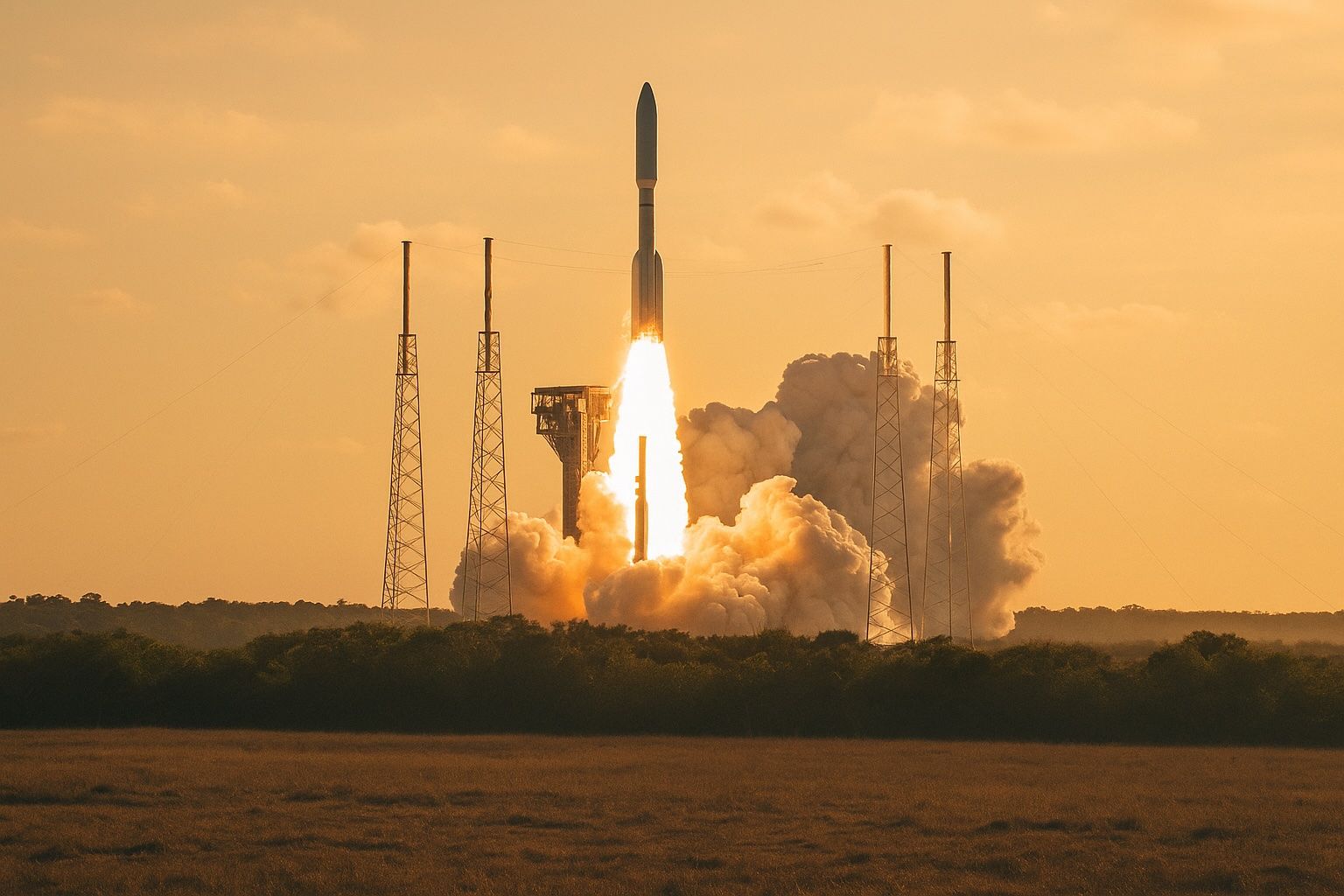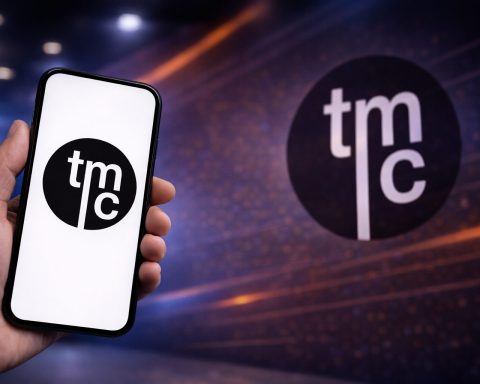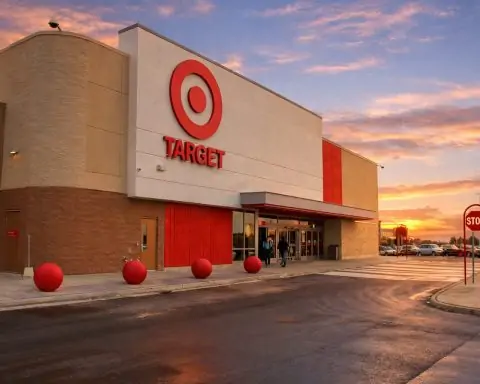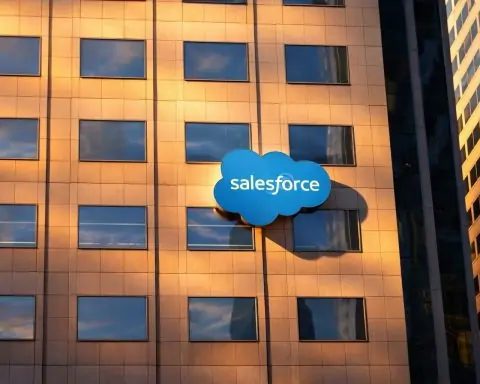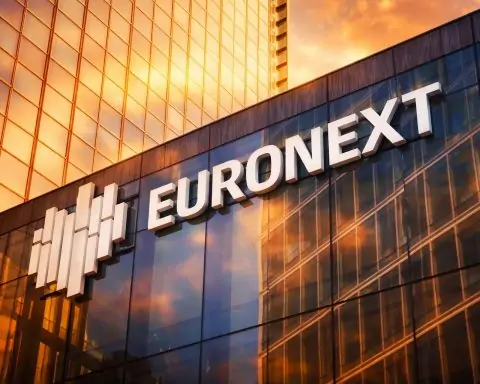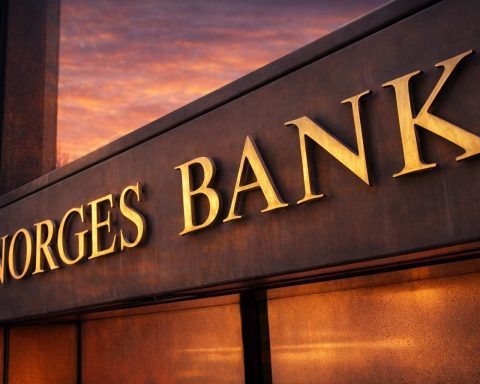- SpaceX’s Transporter-14 rideshare lofted 70 payloads, including memorial capsules, ICEYE and Capella radar sats, and York Space Systems’ Dragoon Tranche-1 12-satellite demo.
- The first Dragoon craft launched Monday on Transporter-14 is now on orbit, with SDA citing a four-month schedule cut to accelerate capabilities.
- Shijian-21 rendezvoused with Shijian-25 at about 22,236 miles, rehearsing refueling and capture maneuvers that analysts warn could neutralize adversary satellites in a conflict.
- T-Mobile’s T-Satellite service will provide full data links on 1 Oct 2025, piggybacking on 657 Starlink satellites, with basic messaging starting 23 July and 911 texting free for all U.S. users.
- SpaceX targets a record 170 orbital launches in 2025, largely to feed Starlink demand, according to company executive Anne Mason.
- SEALSQ and WISeSat orbited WISeSat-3, the first CubeSat embedding post-quantum cryptography hardware, described as a quantum-resistant security infrastructure for Europe.
- QUICK³, a 4‑kg German CubeSat launched yesterday, carries a single-photon source aimed at global quantum key distribution.
- ESA contracted Guardtime, GMV and Politecnico di Milano to design a Fragmentation Consequences Tool that weighs debris cascade risk, not just collision probability.
- A nitrogen COPV failed during a static test at SpaceX’s Starbase on 19 June, triggering twin explosions; the FAA closed its Flight-8 mishap probe on 12 June and will review Flight-10 delays.
- The Vera Rubin Observatory released its first LSST camera images, capturing 10 million galaxies in a Virgo cluster frame and projecting 20 billion by 2035.
The past 24 hours delivered a blizzard of space headlines: an explosive Starship test darkened Elon Musk’s Mars timeline; Europe’s “Project Bromo” megaconstellation stalled amid board‑room drama; the U.S. Space Development Agency (SDA) surprised the Pentagon by lofting a prototype SATCOM bird four months early; T‑Mobile promised Starlink‑powered mobile data for every U.S. dead‑zone; and a shoebox‑sized CubeSat beamed the world’s first post‑quantum–encrypted message from orbit. Below is a curated briefing on the stories that actually matter, why experts say they are consequential, and what to watch next.
1. Military & Security Constellations
SDA’s Tranche 1 “Dragoon” prototype is already on‑orbit
- SDA and York Space Systems slipped a 12‑satellite demo program into SpaceX’s Transporter‑14 rideshare; the first craft launched Monday and is now healthy in LEO [1].
- “When SDA needed this capability sooner, we didn’t just accelerate, we delivered,” said Melanie Preisser, York’s EVP, hailing a four‑month schedule cut [2].
- Director Derek Tournear added that T1DES will validate “beyond‑line‑of‑sight targeting” for the future hundreds‑strong Proliferated Warfighter Space Architecture [3].
Chinese on‑orbit servicing demo heats up GEO
- Optical trackers watched Shijian‑21 rendezvous with Shijian‑25 at 22,236 mi, likely rehearsing refuelling and capture maneuvers [4].
- Space‑security analysts warn the dual‑use tech could “neutralize” adversary satellites during a conflict [5].
2. Commercial Connectivity & Direct‑to‑Cell
- T‑Mobile’s “T‑Satellite” service will open full data links on 1 Oct 2025, piggy‑backing on 657 Starlink birds; basic messaging starts 23 July and 911 texting will be free for all U.S. users [6].
- SpaceX targets a record‑shattering 170 orbital launches in 2025, largely to feed Starlink demand, said company exec Anne Mason [7].
3. Quantum‑Secure & Post‑Quantum Satellites
- SEALSQ and WISeSat orbited WISeSat‑3, the first CubeSat embedding post‑quantum cryptography hardware; the firms call it a “quantum‑resistant security infrastructure for Europe” [8].
- QUICK³, a 4 kg German CubeSat launched yesterday, carries a single‑photon source aimed at global quantum key distribution [9].
4. Space Traffic Management & Collision Avoidance
- ESA tapped Guardtime, GMV & Politecnico di Milano to design a “Fragmentation Consequences Tool” that weighs debris cascade risk, not just collision probability, before maneuvers [10].
- Britain’s National Space Operations Centre reported a 41 % month‑on‑month drop in collision alerts for U.K.‑licensed satellites, but still tracked 30,393 resident space objects by May 31 [11].
5. Europe’s Industrial Chess Match — “Project Bromo”
Airbus, Leonardo and Thales are still wrangling over a joint LEO‑satellite champion:
- Italy’s defence minister Guido Crosetto insists the issue is “industrial capacity, not politics.”
- Thales Alenia’s Benoît Hancart argues that “what is needed is clear, it’s investments.”
- Leonardo chair Stefano Pontecorvo concedes the talks are “still at a preliminary phase, with many numbers that need to be seen.” [12]
Analysts fear schedule slippage could leave Europe dependent on U.S. or Chinese constellations just as demand for sovereign broadband peaks [13].
6. Launch Highlights & Rideshare Bonanza
- SpaceX Transporter‑14 lofted 70 payloads, including memorial capsules, radar sats for ICEYE & Capella, and York’s Dragoon [14].
- France’s Exploration Company hailed “partial success” for its 1.6‑ton Mission Possible re‑entry capsule but lost contact minutes before splash‑down: “We have been pushing boundaries in record time … we will re‑fly as soon as possible,” the firm said [15].
7. Starship’s Fiery Setback
- A nitrogen COPV failed during a static test, triggering twin explosions at Starbase on 19 June. “Preliminary data suggests” that failure mode is unprecedented, Elon Musk posted on X [16].
- The FAA closed its Flight‑8 mishap probe on 12 June after eight corrective actions, but will now examine Flight‑10 delays [17].
8. Science Frontiers
- The Vera Rubin Observatory released its first LSST camera images, capturing 10 million galaxies in a single Virgo‑cluster frame and promising 20 billion by 2035 [18].
- NASA’s daily APOD featured Hubble‑class imagery of spiral galaxy M61, underscoring continued value of legacy observatories [19].
9. Trendlines & What to Watch
| Near‑Term Trigger | Why It Matters | Expected Window |
|---|---|---|
| SDA Tranche‑1 full constellation launch | First operational mesh‑network for missile‑tracking | Late Summer 2025 [20] |
| Europe’s Project Bromo board decision | Determines EU competitiveness vs. Starlink/GuoWang | Q3 2025 [21] |
| Starship Flight 10 | Needed to restore NASA Artemis cargo timelines | NET August 2025 [22] |
| T‑Satellite nationwide roll‑out | First mass‑market sat‑to‑phone data service | 1 Oct 2025 [23] |
| ESA collision‑tool prototype | Could become de‑facto standard in STM policy | Q4 2025 [24] |
Space activity on 24 June 2025 showed the sector’s dual personality — breathtaking innovation (quantum‑secure CubeSats, 10‑million‑galaxy images) alongside sobering failure modes (Starship explosions, lost re‑entry capsules). Policymakers and investors should watch how quickly lessons from today’s mishaps translate into tomorrow’s design fixes — and whether Europe can finance its own answer to Starlink before the U.S. and China saturate LEO.
References
1. defensescoop.com, 2. defensescoop.com, 3. defensescoop.com, 4. www.space.com, 5. spacenews.com, 6. www.capacitymedia.com, 7. www.space.com, 8. quantumzeitgeist.com, 9. ts2.tech, 10. www.gmv.com, 11. www.gov.uk, 12. www.reuters.com, 13. www.reuters.com, 14. www.space.com, 15. spacenews.com, 16. www.reuters.com, 17. www.reuters.com, 18. www.space.com, 19. apod.nasa.gov, 20. defensescoop.com, 21. www.reuters.com, 22. www.reuters.com, 23. www.capacitymedia.com, 24. www.gmv.com
